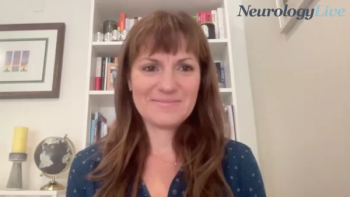
New Approaches in Narcolepsy Therapy
A number of agents are being investigated as potential new therapies for narcolepsy. Here's a brief overview.
Narcolepsy greatly disrupts the lives of those who are afflicted. Symptoms include daytime sleepiness; sudden, unexpected bouts of sleep during the day; cataplexy; and hypnogogic hallucinations. In addition to the inconvenience caused by the symptoms, the danger of accidents and injuries as a result of abrupt sleep onset can pose a serious threat to the health and lives of patients with the disorder.
The therapeutic effect of treatments currently in use remains inadequate for most patients. A number of agents are currently being investigated as potential therapies, some of which may bridge the gap for patients with narcolepsy.
Standard of Care in Narcolepsy
The medical treatments that are regularly used to control the symptoms of narcolepsy are aimed towards alleviating cataplexy or excessive daytime somnolence.
Sodium oxybate, a GABA agonist, is FDA approved for treatment of narcolepsy and is believed to have a depressant effect. The mechanism by which sodium oxybate alleviates some of the symptoms of narcolepsy is not fully understood, and there are theories suggesting that the effect may lie in the alteration of a complex balance of excitatory and inhibitory GABA a and b receptor mediation.
Antidepressants, including SSRIs and tricyclics, are used to reduce the incidence of cataplexy in patients with narcolepsy. Modafinil is believed to increase dopamine and histamine levels, and is used to reduce the daytime sleepiness of narcolepsy. Stimulants such as methylphenidate are also used to manage the daytime sleepiness that is characteristic of the disorder.
New Approaches
Emerging treatments for narcolepsy include medications with the same mode of action as those already considered standard of care, as well as compounds with different therapeutic mechanisms.
Extended release stimulant formulations are being investigated in research studies as a possible way to achieve longer lasting symptom control. A variety of different GABA agonists are also being examined.
Other potentially emerging options include H3 receptor antagonists, which, like modafinil, enhance histamine or histamine-like activity to reduce daytime sleepiness. Hormone-based therapies that target melatonin or thyroid hormone production are among the new pharmacologics currently under investigation. Hypocretin-based therapies aim at modifying another neurotransmitter that implicated in regulating sleep function.
And using immunotherapies to target a possible inflammatory etiology of narcolepsy is another interesting tactic. Immunotherapies including IVIG, plasmaphoresis, and corticosteroids have all demonstrated promising results in a few small studies.
The Future of Narcolepsy Therapy
Narcolepsy is a challenging neurological disorder with several treatment modalities that are not considered sufficiently effective for most afflicted patients. As emerging treatments continue to develop, one of the questions is whether different patients will respond to different categories of medications, or whether a breakthrough in treatment will be effective for the most affected patients.
Do you consider narcolepsy to be a homogeneous or a heterogeneous disorder?
References:
Further reading
. Abad VC, Guilleminault C. New developments in the management of narcolepsy.
. de Biase S, Nilo A, Gigli GL, Valente M. Investigational therapies for the treatment of narcolepsy.
Newsletter
Keep your finger on the pulse of neurology—subscribe to NeurologyLive for expert interviews, new data, and breakthrough treatment updates.






























